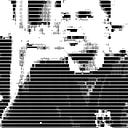Designing with People in Mind — User Centered Design
The term user centered design was first coined by Donald Norman in his book Design of Everyday Things back in 1986. It was under his suggestion that a design should be focused on the needs of the user and he slightly de-emphasized the importance of aesthetics over functionality.
One variable that all businesses have in common are customers. Those customers are the very reason why the business exists in the first place. But all too often businesses put themselves before the customer and ignore their user’s wants and needs. User centered design shifts this focus and works to craft an experience around the user and the users goals.
What is user centered design?
According to Wikipedia user centered design or UCD can be defined as:
“A framework of processes (not restricted to interfaces or technologies) in which the needs, wants, and limitations of end users of a product, service or process are given extensive attention at each stage of the design process.”
What does that mean?
The goal of user centered design is to base the design of a business’s products or services around user’s. By spending time to discover user’s goals, businesses can tailor the experience a user has with the company. Thus assisting in the development of a good user experience.
Let’s look at this idea in context. A company called SuperTask creates a web app for better task management. They target this product to young entrepreneurs who are working diligently towards their future. These entrepreneurs have so much going on it’s a task in itself to stay organized.
Knowing this SuperTask is armed with a bit of very useful information. After much research and competitive analysis SuperTask is able to formulate an MVP or minimum viable product and release this product to market. SuperTask’s MVP was formulated around the user and their end goal of simple task management and organization. It does very well except for one area of the web app, adding new tasks.
SuperTask sees this and begins to review customer data and feedback. They notice that customer complaints are suggesting that this area of the design needs improvement. With this information SuperTask can go back to the drawing board and reshape this experience.
After some iterations and user testing SuperTask was able to fix this problem. Customer satisfaction has gone up and even new customers began using SuperTask’s web app.
By taking the time to understand the user and what they were up against SuperTask was able to refocus the design of their product to better suit the user. They made the system easier to use and much more familiar. Had the company ignored the requests of the user’s they may have struggled dearly with remaining a profitable business.
By thinking of the user first a business can gain empathy for its customers and better position themselves in the market. User centered design not only helps to create amazing products and services for people but also helps businesses meet the very basic business goal of staying in business.
References:
The Design of Everyday Things by Donald Norman
User-Centered Design Basics
http://www.usability.gov/what-and-why/user-centered-design.html
Introduction to User-Centered Design
http://www.usabilityfirst.com/about-usability/introduction-to-user-centered-design/
User-centered design
https://en.wikipedia.org/wiki/User-centered_design
